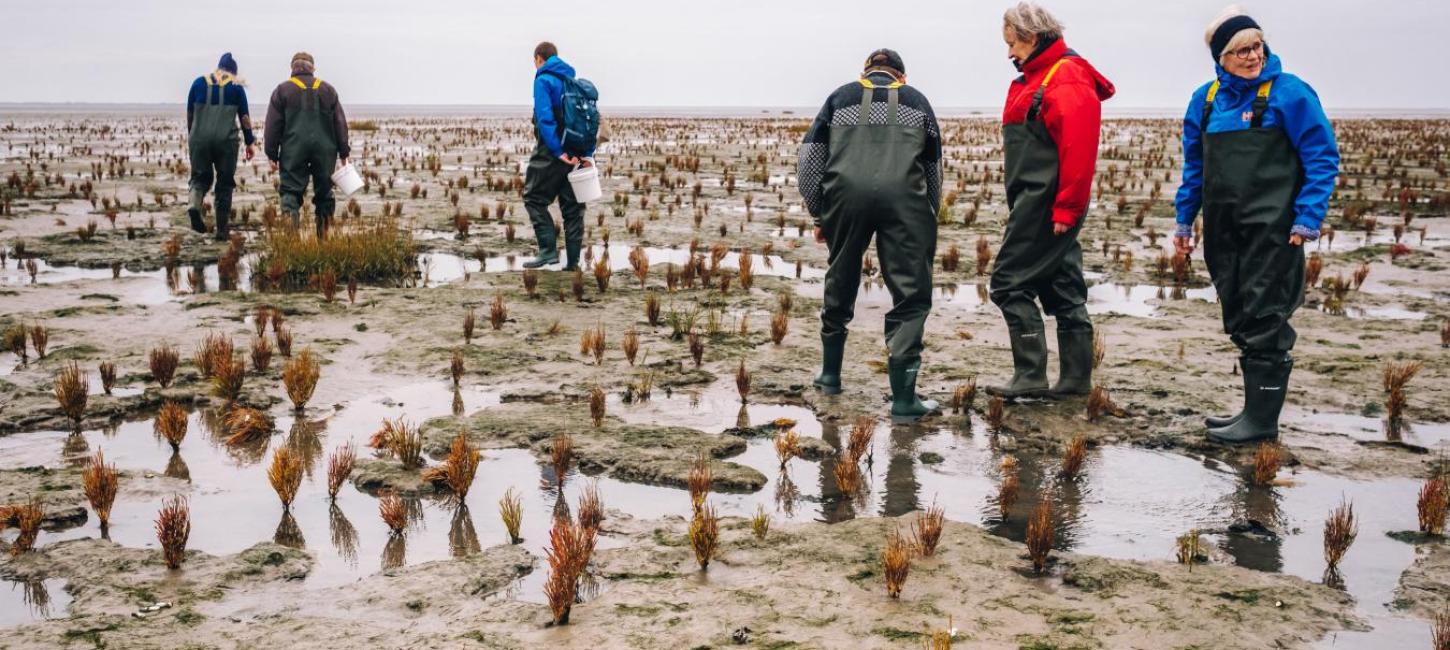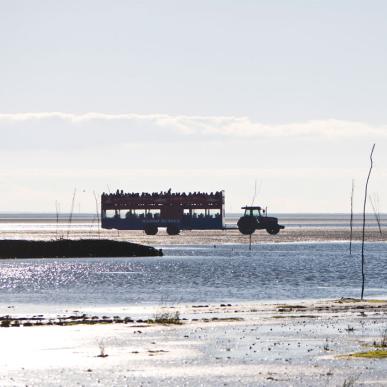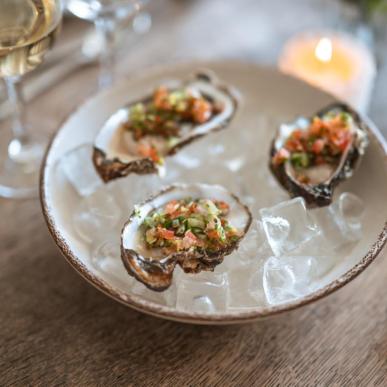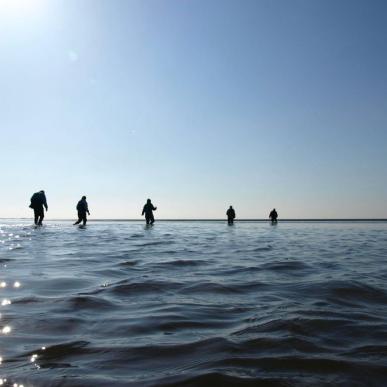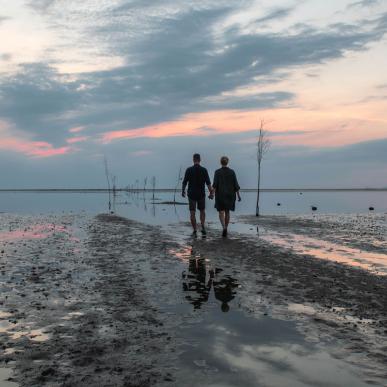Oyster safari in the Wadden Sea
The Wadden Sea offers many delicacies - and both plants and animals are almost ready to pick - salicornia, seagrass, shrimp, mussels and the finest of them all, oysters.
The great Pacific oysters live in the Wadden Sea, but you have to know where they are, you have to know conditions regarding the tides and you have to be able to know good oysters from bad ones. It is recommended to take part in one of the many oyster trips that are arranged during the season. There are many culinary experiences, but nothing beats consuming a newly opened oyster in the fantastic landscape under the high sky of the Wadden Sea.
Season from October to April.
Mudflat walks and oyster-picking
A mudflat walk is the absolute best way to experience the incredible amount of life that lives here. The Wadden Sea is a veritable larder – with thousands of tons of oysters, mussels, clams and other benthic animals. During low tide the sea bed is exposed, making it possible to, among other things, pick oysters, a favourite pastime for locals and guests alike from October until April.
The best oyster picking or mudflat trip you can have is with one of the many fantastic local guides. Not only do they know the best spots, they are also fully informed about health and safety measures, ensuring your trip is safe and fun.
- We only start our trip on the ebbing tide, and stay only until just after the tide turns. If we are uncertain about when is best to go, we go with a local guide.
- We are always dressed according to the weather conditions. The wind can be exhausting and cold, and oysters are sharp enough to cut holes in bags, clothing and welly boots.
- We always carry a fully charged mobile phone on our trips. And always call someone on land when we leave and upon our return.
- We never go out alone, and never further out than we can comfortably return from.
- We only pick as many oysters as we ourselves can eat, and only enough to fill a carrier bag.
- We store oysters in a cool environment and never in water (especially freshwater). We always smell the oysters when we open it and if it does not smell of fresh seawater, we throw it away.
- We never go out in foggy weather or after dark, and always carry a compass and a mobile phone in case the weather turns unexpectedly. It is very easy to lose your bearing on the mudflats.
- If we have joined a tour that is quite long and need a rest stop, we avoid peeing on the oysters. Oysters are wonderful filtration machines, and will filter any liquid that lands on them.
- We avoid walking on dykes, unless it is specifically permitted. Walking on the dyke damages the construction, if it is not reinforced, which can cause catastrophic flooding during storms.
- We pick up any rubbish we find, even if it is not our own.
- We are guests in nature and strive to avoid disturbing birds and seals, who use up essential energy when taking flight or hauling out.
- We understand and respect that the Wadden Sea is ruled by wind and water, and therefore always ensure we have checked the weather conditions before setting out.
Wadden Sea National Park - Code of Conduct
